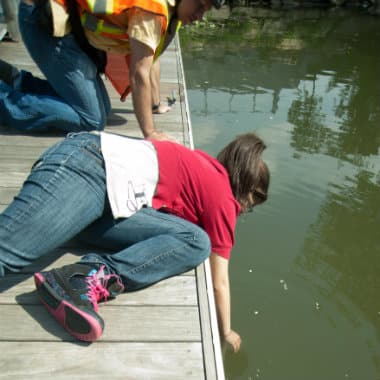On July 2nd, the Daily News ran an article entitled Report: Bronx River is almost as bad as the Gowanus Canal for fecal bacteria. While the Alliance is glad to see coverage of pollution issues in local waterways, we wanted to respond to the Daily News article and further the discussion.
The Daily News makes comparisons between the Bronx River and the Gowanus Canal, for example: " testing reveals that the [Bronx River] now has levels of fecal bacteria to rival the notorious Gowanus Canal, a federal Superfund cleanup site." A misleading aspect of this comparison is that the "notorious" Gowanus’ Superfund site status is not primarily due to fecal pollution; per the U.S. EPA the Gowanus suffers from "industrial pollutants… [including] PCBs, coal tar wastes, heavy metals and volatile organics." These chemical contaminants generally last a very long time and are very expensive to clean up. Sewage and bacteria behave somewhat differently; once their source is eliminated, their levels drop fairly quickly.
The Gowanus does have elevated levels of fecal bacteria. Fecal contamination is also a problem for the Bronx River, the East River, the Hudson, and urban waterways pretty much all over the world. The source of bacterial contamination is generally sewage. Where, how and when sewage gets into the Bronx River can be somewhat complicated.
It’s clear that, during heavier rain storms, the combined sewer and stormdrain systems overflow into the river – through Combined Sewer Overflows (CSOs.) There are a half dozen CSOs connected to the Bronx River, in South Bronx neighborhoods from West Farms to Soundview. Water quality testing shows that bacterial counts shoot up during heavy rain, and then return to background levels within a few days.
The CSOs aren’t the whole story, though. Fecal bacteria does get into the river during dry weather. When it hasn’t rained, samples from the Bronx-Westchester border show more bacteria than the South Bronx. It’s not entirely clear, but this data suggests that there may be (probably illegal un-permitted) sewer connections in Westchester County.
Another source of dry-weather bacterial contamination can be the tides. The East River has some issues with bacterial contamination. This contamination can flow upstream into the Bronx River, bringing bacteria into the Bronx at high tide. Complex tidal flows can interact with freshwater rivers to create zones where some contaminants may linger and concentrate.
The new monitoring data, a project spearheaded by the New York City Water Trail Association, is a good thing. It’s needed, especially to shed light on pollution conditions and how they trend over time. This data can help identify the sources of contamination; it can also indicate what investments can be most successful.
Recent monitoring results aren’t really news. They are showing what’s been known for a while: the Bronx River has a persistent problem with sewage contamination. Today, the river is not safe for swimming, and it won’t be safe until sewage contamination sources have been curtailed. The sewage contamination sources are numerous: inputs from Westchester, CSO outputs (definitely during rain events and possibly also during dry weather), tidal flows, and probably other lesser sources not well understood. Though the Bronx River is generally clean enough for canoeing and other activities with minimal water contact, today the river is too polluted for swimming.
(Photo: Charles Berenguer)>





